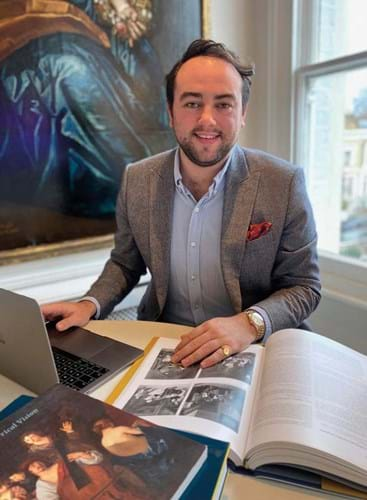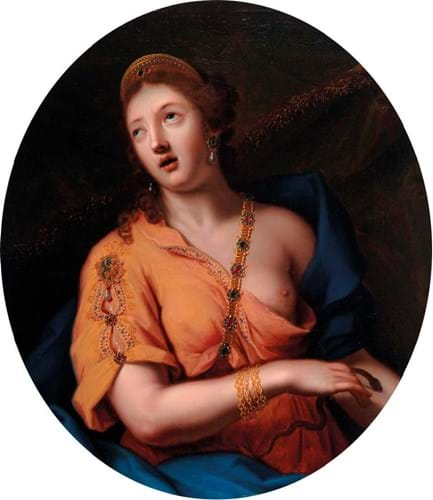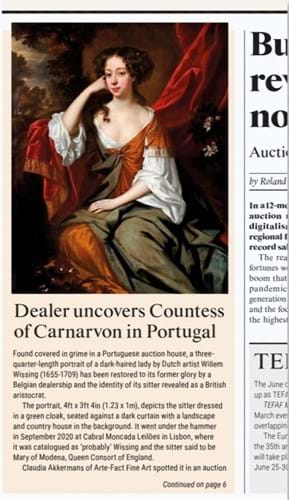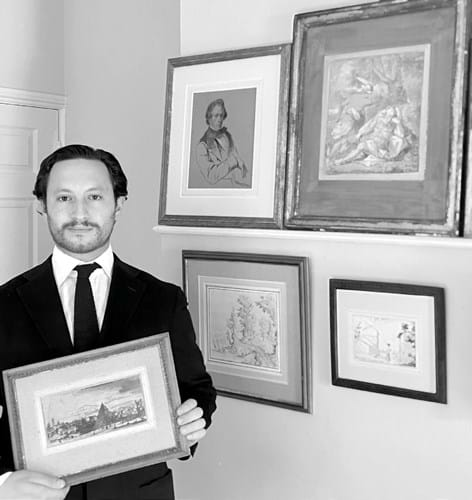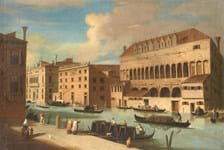They face an ever-shrinking supply of stock and a market dominated by established dealers, many with extensive lists of contacts, attractive premises and a lot of buying power.
However, a clutch of dealers under 30 have embraced a new way of doing business, relying on rediscoveries to make their names and the internet to sell their stock.
Among these newcomers is Peter Harrison, 27, who was keen to enter the market after university but reluctant to vie for one of the increasingly competitive entry level places at a major auction house.
“I didn’t want to work at an auction house,” he tells ATG. “I found the idea being able to buy and sell works of my choice the most tempting draw. I thought just starting on my own would be a longterm career move. I started out quite small.”
His first item of stock was a Mary Beale (1633- 99) portrait which he spotted at auction and bought for around £1500.
“It was not the most important work, but it was unattributed. I did some research in the archives and sold it on.”
Since then, he’s continued to specialise in ‘sleepers’, rediscovering works by artists such as George Romney, Peter Lely and Godfrey Kneller.
It is not an easy route to the market, nor a fast one.
Once he has snapped up a picture, there is the lengthy process of restoring, researching (though, he adds, this is his favourite part of the job) and framing, which can take months, not counting the additional time it might take to sell.
Entirely self-funded, getting his foot in the door means being cautious with how he employs his money.
He hopes to exhibit at a fair or even open a gallery space eventually, but failing to sell at an event can mean losing many thousands of pounds that could otherwise be put towards restoration and research. There will be time for that later. For now, his focus is online.
Legal eagle to eye for art

Dealer Claudia Akkermans, 27, launched her Old Masters business, Arte-Fact Fine Art, several weeks before lockdown started in her native Belgium. Offered for €12,950 is this Dutch 17th century portrait of a lady.
The same is true for dealer Claudia Akkermans, 27, who launched her Old Masters business, Arte-Fact Fine Art, several weeks before lockdown started in her native Belgium. It was another setback on a circuitous path to dealing.
Her father was a collector, but she initially followed family tradition and studied law. She spent summer holidays helping out a local restorer and trading on the side. After completing her degree she made the decision to run a gallery.
“I very much realised that it would be risky and difficult endeavour but I’d rather work twice as hard than to give up on what truly intrigues me,” Akkermans says. She planned to open with an exhibition but with the advent of coronavirus she was forced to scrap it and rethink.
“The additional challenge was that the gallery was new and didn’t have a very large ‘little black book’ of contacts. So, to survive, I radically changed the business plan and started focusing on selling online.”
Since then Akkermans has sold around 100 paintings online, all sightunseen, with a record price of around €50,000. Collectors’ willingness to buy these works is on the rise, she says, though she remains committed to photographing and cataloguing them in as much detail as possible.
Like Harrison, she has an interest in reviving works through research and restoration.
One recent example of her offerings is a portrait by Willem Wissing (1655-1709) of a sitter she revealed to be the Countess of Carnarvon.
The portrait was found covered in grime in a Portuguese auction house and restored to its former glory over the course of two years and offered for €35,000, well over its hammer price of €17,000 (see ATG No 2527).
Both Harrison and Akkermans are cheerful about their paths, revelling in the ‘thrill of the chase’. However, for more established dealers, theirs is a different way of doing business.
Sleeper dangers
Toby Campbell of Rafael Valls tells ATG: “I do notice that there are a lot of (younger) dealers who have had very little experience generally and who are enamoured with the idea of the ‘sleeper effect.’
“Really a sleeper is a major painting miscatalogued and then discovered either by one or more dealers, and then usually sold quietly under the radar. There are of course plenty of other types of sleeper, but usually people do not choose to publicise them, although this has obviously changed in recent years.
“There is a big danger that they get carried away with this idea and end up constantly hunting for something that they can never find. No doubt it is very tricky for younger dealers to get going also simply because of the finance they need, added to the fact that supply is ever dwindling [in the Old Master painting market].”

Rafael Valls offers this view of Packwood House in Warwickshire, an English school oil on canvas, 4ft 8in x 7ft 5in (1.42 x 2.27m) from c.1700, for a price in the region of £120,000.
Rafael Valls specialises in paintings from the 16th-19th centuries and, in Campbell’s opinion, there is a risk in over-emphasising artists in the Old Master market rather than the quality of individual works.
For dealers just starting out, however, searching for the hand of the master is both practical for their business and stimulating for their minds.
Built from scratch
For Tom Mendel, 26, of Nonesuch Gallery, unattributed drawings are particularly engrossing – more so than paintings, offering an insight into the artist’s mind and an academic challenge.
Mendel went solo shortly before lockdown after two and a half years at an auction house.
Two years on he has several major sales to museums (including the Cleveland Museum of Art, The British Museum and the Musée des Beaux-Arts de Carcassonne) under his belt and is due to stand at his first art fair, Connect in London, at the end of the month.
His focus is Old Master works on paper and British watercolours, with his stock spanning the 16th to 20th centuries.
While he says the business has gone better than he could have expected, it has been difficult.

Nonesuch Gallery offers this watercolour by James Holland, Washerwomen beneath the Fountain of St Hugo of Genoa, Near the Palazzo Andrea Dorea, 1869 for £5000.
“In my experience dealers either save capital or have a financial backer that they’ve met from their career, so that when they start they can dive in at the deep end,” Mendel says.
“When I started, I was selling pictures for £100 or £150 or less to friends and total strangers. I had to build my client network from scratch.
“But now increasingly I’ll see something on a more established dealer’s site and think ‘I underbid that two years ago’.”
Similar struggles
But the up-and-comers are full of interest in each other’s work as well.
“We’ve found similar struggles and between us it’s all been similar stories,” says Harrison.
“But it’s so interesting looking at my colleagues who like me are sort of ‘post-uni’ age and seeing what they are doing and how they are doing it.”


